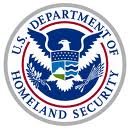
Recently, USCIS added an important update to their E-Verify website that attempts to clarify the definition of a “hire date” and the timing requirements for when employers are expected to complete Section 2 of the Form I-9 and when to E-Verify. In what can only be described as a sweeping change with widespread implications, USCIS states that employers are to complete the I-9 and run the E-verify case no later than three business days after an employee starts work for pay. Here’s the key passage (check out the full webpage here):
If the employee starts work for pay on Monday, the third business day after the employee started work for pay is Thursday (assuming all days were business days for the employer). The first day the employee starts work for pay is not included in the three business day calculation. (emphasis added)
This issue of when to start counting the number of days an employer has to complete Section 2 and run the E-verify case has been a grey area subject to debate, especially since the Form I-9 and E-Verify literature use slightly different language to define the requirement, sometimes even within the same document as with the M-274, Handbook for Employers (see pages 5 and 6). Given these murky waters, many employers have taken the conservative approach and begin the count with the employee’s start date as day one for determining the third day of work. By comparison, under these new guidelines, USCIS has effectively extended the Section 2 and E-Verify deadline by a full business day.
While it’s generally good news to receive more leeway from regulators for meeting compliance deadlines, before making any changes to I-9 policies or procedures, such as allowing for an additional day to complete Section 2, employers are strongly encouraged to seek legal advice from informed counsel. Furthermore, there are still several unanswered questions that require DHS clarification, so it’s unlikely that this will be the last that we will hear on this important topic. For example, will Immigration and Customs Enforcement (ICE) issue concurring guidance? After all, ICE is the DHS agency charged with conducting I-9 audits that can result in significant penalties. According to unconfirmed sources, ICE has agreed to respect USCIS’ “Thursday Rule.” If this is true, we hope USCIS and ICE move quickly to harmonize their documentation and field training in a transparent and consistent manner, including updates to the M-274.
The USCIS update also provides instructions to employers for how to create an E-Verify case for a new employee once they have accepted an offer and completed Form I-9. Be warned that these directions are confusing. USCIS instructs employer to enter the current date in E-Verify if the Form I-9 contains a hire date that is forthcoming, since the E-Verify system won’t accept a future hire date. If the employee’s hire date is today or a previous date, enter the hire date on the Form I-9 in E-Verify. To summarize, USCIS published the following chart and admission on its website:
We realize the term “hire date” in E-Verify is confusing because its meaning can vary depending on:
- When the employee starts work for pay
- The date the case is created in E-Verify
|
Determining the E-Verify Hire Date |
|
|
If you create the case in E-Verify: |
Then the E-Verify hire date is: |
| Before the employee starts work for pay | The date you create the case in E-Verify |
| On or after the employee starts work for pay | The date the employee started work for pay |
Regardless of which approach an employer takes, it’s always a best practice to be consistent and create a procedure for your company’s I-9/E-Verify policy and training materials.
Disclaimer: The content of this post does not constitute direct legal advice and is designed for informational purposes only. Information provided through this website should never replace the need for involving informed counsel on your employment and immigration issues.